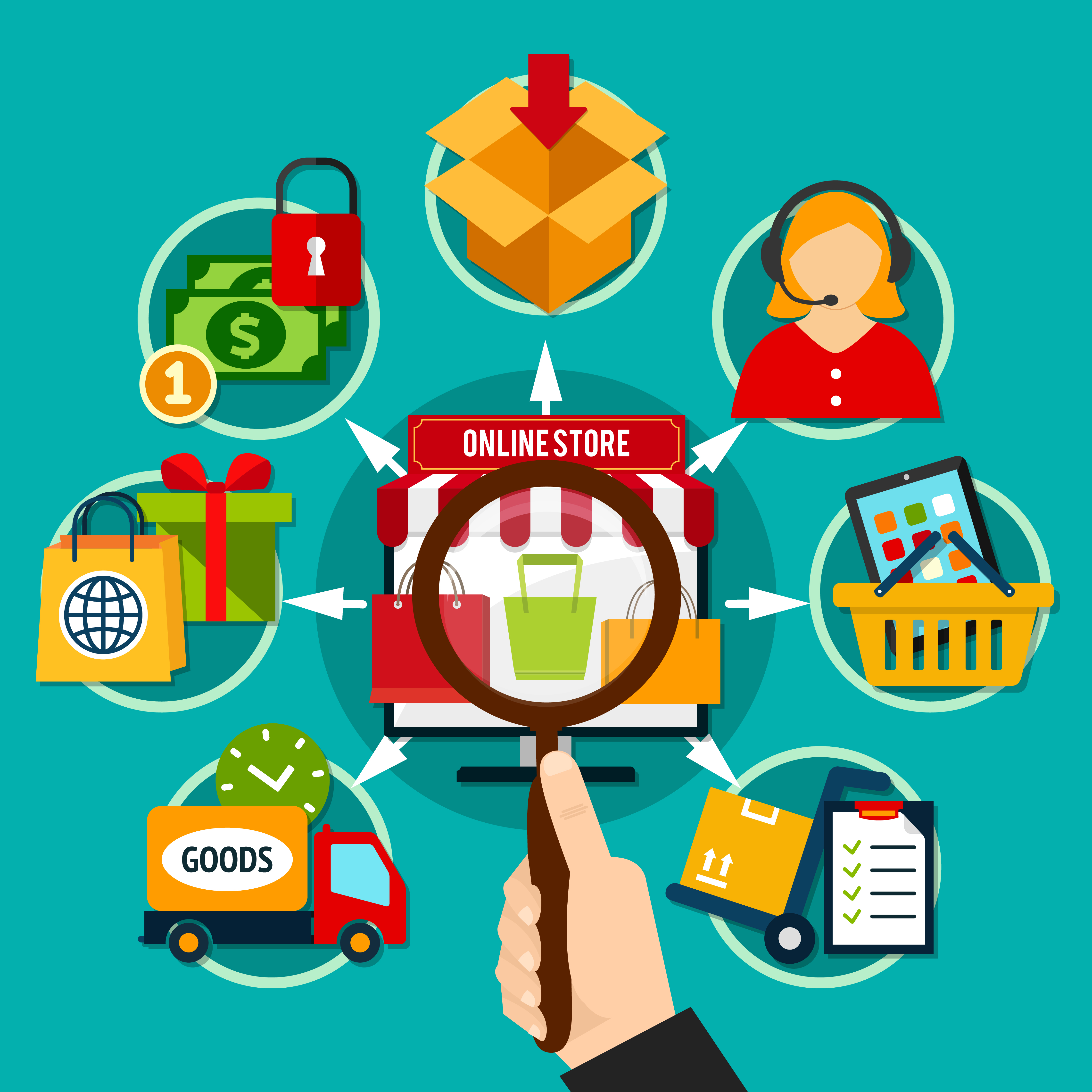The circular economy represents a $4.5 trillion economic opportunity that many e-commerce businesses overlook while focusing solely on traditional growth metrics. Surprisingly, this approach isn't just about environmental responsibility—it's a powerful profit driver hiding in plain sight.
While the conventional linear "take-make-dispose" model has dominated e-commerce for years, forward-thinking brands now embrace circular principles that turn waste into wealth. This paradigm shift creates multiple revenue streams through product reuse, refurbishment, and innovative business models. In fact, companies implementing circular strategies report up to 25% increased customer loyalty and significant reductions in production costs.
This guide explores how e-commerce businesses can unlock these hidden profit opportunities. We'll examine the fundamental differences between linear and circular models, showcase successful case studies, and provide a practical framework for transitioning your business toward a more profitable and sustainable future.
What is the Circular Economy and Why It Matters for E-commerce
Traditional business models have long operated on a "take-make-dispose" approach, but shifting consumer preferences and resource limitations are pushing e-commerce toward more sustainable practices. The circular economy represents a fundamental rethinking of how products and materials flow through our economic system, creating value where waste once dominated.
Linear vs. circular models explained
The linear economy follows a straightforward path: raw materials are extracted, transformed into products, sold, used, and ultimately discarded. This one-way street creates a continuous demand for new resources and generates mounting waste. For e-commerce businesses, this typically means:
- Constantly sourcing new materials
- Manufacturing products designed for limited lifespans
- Shipping items in single-use packaging
- Dealing with returns as a cost center rather than an opportunity
In contrast, the circular economy reimagines this process as a closed loop where products and materials maintain their value indefinitely. Instead of ending in disposal, circular systems prioritize:
- Designing products for durability, repairability, and eventual recycling
- Maximizing resource utilization through sharing platforms
- Creating take-back systems that recover valuable materials
- Establishing refurbishment operations that give products second lives
The key difference? Linear models measure success by units sold, whereas circular approaches focus on the ongoing value created throughout a product's multiple lifecycles.
Why e-commerce needs a new approach
E-commerce businesses face unique challenges that make circular models particularly valuable. First, online retailers deal with return rates averaging 30% for apparel—three times higher than brick-and-mortar stores. This creates significant reverse logistics costs and potential waste.
Additionally, direct-to-consumer brands have unprecedented control over their supply chains, packaging decisions, and customer relationships. This control enables them to implement circular practices more effectively than traditional retail models.
E-commerce platforms also excel at data collection, providing critical insights into customer preferences and usage patterns. This information can inform better design decisions and reveal opportunities for service-based business models that reduce overall consumption while maintaining revenue growth.
Furthermore, online-first businesses typically operate with lower overhead costs, allowing them to experiment with innovative circular approaches that might initially require investment before delivering returns.
Environmental and economic pressures driving change
Beyond business advantages, external pressures are accelerating the shift toward circular e-commerce models. Environmentally conscious consumers increasingly base purchasing decisions on sustainability factors, with 73% of millennials willing to pay more for sustainable products.
Resource scarcity presents another compelling reason for change. Many critical raw materials face supply constraints, price volatility, and geopolitical risks. Circular approaches that recover and reuse these materials offer protection against supply disruptions and price fluctuations.
Regulatory developments worldwide also push businesses toward circularity. Extended Producer Responsibility laws, plastic packaging taxes, and right-to-repair legislation create financial incentives for circular design and operations.
Perhaps most importantly, the economics of circularity increasingly make business sense. Companies that implement circular models often discover cost savings through reduced material inputs, lower waste management expenses, and new revenue streams from previously discarded items.
For e-commerce brands seeking competitive advantage, the circular economy offers not just environmental benefits but a powerful framework for innovation and growth.

How Circular Economy Creates Hidden Profit Opportunities
Beyond environmental benefits, the circular economy offers tangible financial advantages for e-commerce businesses willing to rethink their operations.
Companies implementing circular principles often discover that sustainability and profitability go hand in hand, creating a powerful business case for change.
Lower production costs through reuse
E-commerce brands embracing circular principles see significant reductions in production expenses.
By recovering and reusing materials from existing products, companies can slash raw material costs while simultaneously reducing waste management expenses.
Consider that manufacturing from recycled materials typically requires 30-40% less energy than producing items from virgin resources.
For products with valuable components—like electronics, furniture, or high-end apparel—recovery operations can yield substantial savings on procurement costs.
Moreover, circular design principles emphasize durability and modularity, which extends product lifecycles and reduces warranty claims.
When products last longer and components can be easily replaced, businesses spend less on replacements and customer service issues related to premature failures.
Efficient take-back programs also provide valuable market intelligence, giving companies direct insight into how products wear over time.
This data drives design improvements that further reduce material needs and maintenance costs in future product iterations.
Customer loyalty from sustainable practices
Contemporary consumers increasingly factor sustainability into purchasing decisions. Research indicates that 73% of millennials are willing to pay more for sustainable products,
making circular practices a powerful loyalty driver. Businesses that communicate their circular initiatives effectively build stronger emotional connections with customers.
These connections translate into measurable business outcomes—companies with strong sustainability programs report up to 25% increased customer retention rates compared to competitors.
Subscription models, which epitomize circular thinking by focusing on access rather than ownership, create recurring revenue relationships. Additionally, take-back and trade-in programs encourage repeat purchases while gathering valuable first-party data about customer preferences and usage patterns.
Essentially, circular practices transform one-time buyers into long-term stakeholders in a brand's ecosystem. When customers participate in recycling or trade-in programs, they develop deeper brand allegiance that withstands competitive price pressures.
New revenue streams from resale and refurbishment
Perhaps the most exciting profit opportunity in the circular economy comes from monetizing product lifecycles that previously ended at disposal.
Forward-thinking e-commerce brands now generate significant revenue from:
- Refurbished product sales that reach price-sensitive market segments
- Subscription models that provide recurring revenue while maintaining ownership of valuable materials
- Parts recovery operations that extract components for repair services
- Licensing specialized refurbishment techniques to third parties
- Premium pricing for products with demonstrable sustainability credentials
The re-commerce market (selling previously owned goods) is growing approximately 20 times faster than the broader retail market, presenting a massive opportunity for brands willing to innovate.
Notably, circular business models often yield higher profit margins than traditional sales. When companies maintain ownership of their materials through take-back programs, they effectively hedge against raw material price volatility while creating new service-based revenue streams.
Consequently, e-commerce businesses can serve multiple market segments with the same physical resources—first as premium new products, then as refurbished options, and ultimately as recovered materials for new manufacturing. Each phase captures value that would otherwise be lost in a linear system.

Key Circular Strategies for E-commerce Brands
Implementing circular economy principles into e-commerce operations requires strategic approaches that benefit both businesses and consumers.
Forward-thinking brands are now adopting several key methods to close the loop on product lifecycles while creating new value opportunities throughout their operations.
Product take-back programs
E-commerce brands increasingly establish structured systems to reclaim products after consumer use.
These programs incentivize customers to return items at end-of-life or when upgrading, creating closed-loop material flows. Successful take-back initiatives typically offer store credit, discounts on new purchases, or cash payments to motivate participation.
The most effective programs make returns convenient through prepaid shipping labels, drop-off locations, or even home pickup services.
Behind the scenes, recovered products enter assessment workflows where they're categorized for refurbishment, parts harvesting, or material recycling—maximizing value recovery at each stage.
For brands, these programs provide reliable access to secondary materials, reduce virgin resource dependency, and strengthen customer relationships through ongoing engagement.
They also generate valuable data about product durability and usage patterns that inform future design improvements.
Subscription and rental models
Transitioning from ownership to access-based models represents another powerful circular strategy.
Through subscriptions and rentals, e-commerce businesses maintain ownership of physical assets while providing customers with the benefits of use.
Fashion platforms now offer monthly clothing subscriptions, furniture companies provide modular components that adapt to changing needs, and electronics brands lease premium devices with automatic upgrade paths.
These approaches decouple revenue growth from increased production volumes.
The subscription model creates predictable recurring revenue streams while ensuring products remain within the company's control for proper maintenance, upgrading, and eventually recycling.
Customers benefit from reduced upfront costs, flexibility, and freedom from maintenance responsibilities.
Recommerce and second-hand marketplaces
Establishing dedicated platforms for previously owned products allows e-commerce brands to capture value across multiple product lifecycles.
Unlike traditional resale, brand-operated re-commerce maintains quality control and authenticity guarantees that build customer confidence.
Many companies now create dedicated "certified pre-owned" sections on their websites or partner with specialized platforms to facilitate peer-to-peer exchanges.
These marketplaces extend product lifespans, reach price-sensitive customer segments, and generate additional revenue without manufacturing new items.
Importantly, re-commerce platforms provide crucial market insights about which products maintain value over time—information that should inform future design decisions.
Products with strong residual value often become candidates for circular business models like leasing or buy-back programs.
Eco-friendly packaging and logistics
The final essential strategy addresses the significant environmental impact of e-commerce shipping and packaging. Circular approaches include:
- Reusable shipping containers that shuttle between warehouses and customers
- Packaging made from post-consumer recycled materials
- Right-sized packages that eliminate unnecessary void fill
- Biodegradable or compostable materials for unavoidable single-use applications
Forward-thinking brands also optimize logistics networks to reduce transportation emissions through route optimization, consolidation of shipments, and strategic fulfillment center placement.
Some companies even partner with competitors to share delivery infrastructure during the final mile—the most resource-intensive segment of shipping.
Beyond materials, circular logistics involve designing reverse flows that efficiently handle returns, repairs, and end-of-life products.
These systems transform what was once considered a cost center into a strategic asset that recovers value and strengthens customer relationships.
Real-World Examples of Circular E-commerce Success
Several pioneering companies have turned circular economy principles into profitable business models, proving that sustainability and profitability can indeed work hand in hand.
These real-world examples demonstrate how theory transforms into practice across different e-commerce sectors.
Patagonia's Worn Wear program
Patagonia stands out as an early adopter of circular thinking through its Worn Wear initiative.
This program encourages customers to repair, reuse, and recycle their garments instead of purchasing new ones—seemingly counterintuitive for a retailer.
Yet, this approach has strengthened customer loyalty significantly.
The program operates on multiple fronts: repair services extend product life, buy-back options recover used gear, and resale platforms offer these items to new customers at lower price points.
Repair guides and sewing kits empower customers to fix their own items, creating deeper brand connections.
Despite initially appearing to cannibalize new sales, Worn Wear has actually boosted Patagonia's profitability by creating additional revenue streams from the same physical products and cementing their reputation as an environmentally responsible brand.
ThredUp's resale platform
ThredUp has built an entire business model around the recommerce concept, becoming one of the largest online consignment platforms.
Their sophisticated processing system uses AI to efficiently sort, categorize, photograph, and price thousands of unique items daily.
By handling the complex logistics of secondhand sales, ThredUp enables both individuals and brands to participate in circular commerce without developing specialized infrastructure.
Their "Resale-as-a-Service" offering allows traditional retailers to launch their own branded resale programs with minimal investment.
This approach has created a scalable circular system that keeps millions of garments in use longer.
For partner brands, these programs generate additional revenue while gathering valuable data about product durability and secondary market value.
Loop's reusable packaging model
Loop has reimagined e-commerce packaging through a deposit-based system reminiscent of milk bottle returns.
Partnering with major consumer brands, they deliver products in premium, reusable containers that are collected, cleaned, and refilled—eliminating single-use packaging waste.
The system creates multiple benefits: brands gain distinctive premium packaging that enhances shelf appeal, consumers enjoy upgraded product experiences, and the environment benefits from reduced packaging waste.
The deposit model ensures high return rates, completing the circular flow.
For e-commerce operations, Loop demonstrates how circular principles can address the significant packaging waste challenge—transforming what was previously a cost center and environmental liability into a customer experience differentiator.

How to Transition Your E-commerce Business to a Circular Model
Transforming an existing e-commerce operation into a circular business model requires a methodical approach.
Moving away from the traditional linear model doesn't happen overnight, yet the journey typically begins with these four strategic steps.
Step 1: Audit your current product lifecycle
Begin by mapping your product's complete journey—from raw material sourcing to manufacturing, distribution, customer use, and end-of-life disposal. Identify waste points, environmental impacts, and untapped value opportunities at each stage. This audit reveals circular economy potential unique to your business.
Examine your return rates and current waste management practices. Online retailers face return rates up to 30% for apparel categories, creating significant reverse logistics challenges but also potential circular opportunities.
Document which materials you currently discard that might retain value through reuse or recycling.
Step 2: Identify circular opportunities
Following your audit, pinpoint specific areas where circular principles could create value.
Analyze customer data to understand which products maintain value over time—these items generally make excellent candidates for resale programs or subscription models.
Consider potential revenue streams such as:
- Refurbishment and resale of returned items
- Subscription services for frequently replaced products
- Component recovery programs for high-value parts
- Trade-in incentives that encourage repeat purchases
Prioritize opportunities based on potential profitability alongside sustainability impact. The most successful circular initiatives generally balance both environmental and business benefits.
Step 3: Partner with logistics and recycling providers
Building a circular business often requires specialized expertise. Accordingly, most successful circular transitions involve strategic partnerships with reverse logistics providers, refurbishment specialists, or materials recyclers.
Seek partners with experience in your product category and technology to track materials throughout their lifecycle. Effective tracking enables you to measure circularity progress and communicate transparent sustainability metrics to stakeholders.
Establish clear processes for product returns, quality assessment, and materials separation. These systems ultimately determine whether your circular initiatives generate profit or become cost centers.
Step 4: Communicate your circular value to customers
Specifically highlight the benefits customers receive from your circular model—whether economic savings, environmental impact, or enhanced product experiences. Transparency about your circular journey resonates with today's conscious consumers.
Make participation straightforward by creating simple instructions for product returns or trade-ins. Complicated processes discourage customer engagement in circular programs.
Showcase metrics that quantify the positive impact of customer participation. When customers understand how their actions contribute to meaningful outcomes, they're more likely to support your circular initiatives through continued patronage and word-of-mouth promotion.
Conclusion
The circular economy stands as much more than an environmental philosophy—it represents a strategic business approach with substantial profit potential for e-commerce brands.
Throughout this guide, we've seen how circular principles transform waste into wealth through multiple product lifecycles, creating value where traditional linear models see only disposal costs. Consequently, forward-thinking e-commerce businesses now recognize sustainability not as a cost center but as a competitive advantage.
Evidence clearly demonstrates that circular strategies deliver tangible financial returns. Lower production costs emerge from reused materials, customer loyalty strengthens through meaningful sustainability practices,
and new revenue streams develop from previously untapped lifecycle stages. These benefits compound over time as circular systems mature within organizations.
Companies like Patagonia, ThredUp, and Loop have already proven the viability of circular business models across different market segments.
Their success stories illustrate how sustainability and profitability work together rather than in opposition. Additionally, these pioneers have created roadmaps that other e-commerce businesses can follow,
adapting circular principles to their specific products and customer relationships.
Your journey toward circular e-commerce begins with understanding your current product lifecycle, identifying specific opportunities, establishing strategic partnerships,
and effectively communicating your value proposition to customers. This transition requires commitment but offers significant rewards for businesses willing to innovate.
E-commerce stands at a pivotal moment where environmental necessity aligns with business opportunity.
Companies that embrace circular thinking position themselves for long-term success while those clinging to purely linear models face increasing resource costs, regulatory challenges, and consumer skepticism.
Therefore, circular economy practices represent not just responsible business—they embody smart business for the future of e-commerce.











